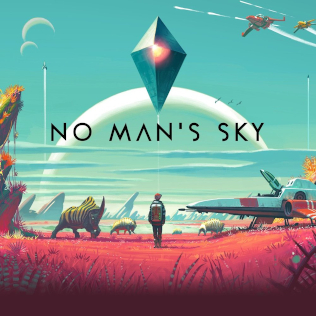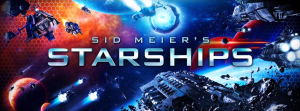
A platformer is a sub-genre of action video games in which the core objective is to move the player character between points in an environment. Platform games are characterized by levels with uneven terrain and suspended platforms of varying height that require jumping and climbing to traverse. Other acrobatic maneuvers may factor into the gameplay, such as swinging from vines or grappling hooks, jumping off walls, gliding through the air, or bouncing from springboards or trampolines.

4X is a subgenre of strategy-based computer and board games, and includes both turn-based and real-time strategy titles. The gameplay generally involves building an empire. Emphasis is placed upon economic and technological development, as well as a range of military and non-military routes to supremacy.

Food Fight is an arcade video game developed by General Computer Corporation and released by Atari, Inc. in March 1983. The player guides Charley Chuck, who is trying to eat an ice cream cone before it melts, while avoiding four chefs bent on stopping him. 1,951 arcade cabinets were sold.

Over one hundred video games based on the Star Wars franchise have been released, dating back to some of the earliest home consoles. Some are based directly on films while others rely heavily on the Star Wars Expanded Universe.

Superman Returns is a video game based on the film of the same name. It was developed by EA Tiburon and co-published by Electronic Arts and Warner Bros. Interactive Entertainment in conjunction with DC Comics.

Nibbler is an arcade snake maze game released in 1982 by Chicago-based developer Rock-Ola. The player navigates a snake through an enclosed maze, consuming objects, and the length of the snake increases with each object consumed. The game was the first to include nine scoring digits, allowing players to surpass one billion points.

Benjamin Richard "Yahtzee"Croshaw, is a British comedic writer, author, video game journalist, humorist, podcaster, and video game developer. He is best known for the video game review series Zero Punctuation, which he produced for The Escapist from 2007 to 2023. Before this, Croshaw gained attention in the Adventure Game Studio community for his video game production.

Lock 'n' Chase (ロック・ン・チェイス) is a maze chase video game developed by Data East and released in arcades in Japan in 1981. It was licensed to Taito for distribution in North America. Lock 'n' Chase has similarities to Pac-Man, including a goal of collecting dots, with the addition of doors that periodically block pathways. Home versions for the Intellivision and Atari 2600 were published by Mattel in 1982 and an Apple II version in January 1983.

The Elder Scrolls IV: Shivering Isles is the second expansion pack for the role-playing video game The Elder Scrolls IV: Oblivion. Announced on January 18, 2007, the expansion was developed, published, and released over the Xbox Live Marketplace by Bethesda Softworks; its retail release was co-published with 2K Games. It was released for Microsoft Windows in a boxed retail edition on March 26, 2007, while the Xbox 360 version was released digitally on the Xbox Live Marketplace. Shivering Isles takes place on the eponymous isles ruled by the Daedric Prince of Madness, Sheogorath. The player becomes Sheogorath's protégé, and together they try to defeat the Daedric Lord of Order, Jyggalag, thus preventing the isles from being destroyed; this main quest can be ignored for as long as the player wishes to interact with the new world. It is often considered to be Bethesda's best expansion, as well as one of the best expansions in video game history.

Pokémon Mystery Dungeon: Explorers of Time and Pokémon Mystery Dungeon: Explorers of Darkness are a matched pair of Pokémon games developed by Chunsoft and published by The Pokémon Company and Nintendo for the Nintendo DS. The two games were released in Japan in September 2007, and in North America and Europe in 2008. A third version, Pokémon Mystery Dungeon: Explorers of Sky, was released for the same hardware in 2009.
Universe Sandbox is a series of interactive space sandbox gravity simulator educational software video games. Using Universe Sandbox, users can see the effects of gravity on objects in the universe and run scale simulations of the Solar System, various galaxies or other simulations, while at the same time interacting and maintaining control over gravity, time, and other objects in the universe, such as moons, planets, asteroids, comets, and black holes. The original Universe Sandbox was only available for Windows-based PCs, but an updated version was released for Windows, macOS, and Linux in 2015.

M Network was a video game division of Mattel that, in the 1980s, produced games in cartridge format for the Atari 2600 video game system.

Assassin's Creed IV: Black Flag is a 2013 action-adventure video game developed by Ubisoft Montreal and published by Ubisoft. It is the sixth major installment in the Assassin's Creed series. Its historical timeframe precedes that of Assassin's Creed III (2012), but its modern-day sequences succeed III's own. Black Flag was originally released for PlayStation 3, Xbox 360, and Wii U in October 2013 and a month later for PlayStation 4, Windows, and Xbox One. It was later ported to the Nintendo Switch as part of The Rebel Collection alongside Assassin's Creed Rogue in December 2019. The game was released for Google Stadia in September 2021.

No Man's Sky is an action-adventure survival game developed and published by Hello Games. It was released worldwide for the PlayStation 4 and Windows in August 2016, for Xbox One in July 2018, for the PlayStation 5 and Xbox Series X and Series S consoles in November 2020, for Nintendo Switch in October 2022, and for macOS in June 2023. The game is built around five pillars: exploration, survival, combat, trading and base building. Players can engage with the entirety of a procedurally generated deterministic open world universe, which includes over 18 quintillion planets. Through the game's procedural generation system, planets have their own ecosystems with unique forms of flora and fauna, and various alien species may engage the player in combat or trade within planetary systems. Players advance in the game by mining for resources to power and improve their equipment, buying and selling resources using credits earned by documenting flora and fauna or trading with the aforementioned lifeforms, building planetary bases and expanding space fleets, or otherwise following the game's overarching plot by seeking out the mystery around the entity known as The Atlas.

Sid Meier's Starships is a turn-based strategy video game developed by Firaxis Games and published by 2K. It was released on March 12, 2015 for Microsoft Windows, OS X, and iOS. The game is a stand-alone title but shares the same universe as Civilization: Beyond Earth, putting the player in control of a fleet of space-faring craft. The player will use the fleet to explore the galaxy, meeting other human and alien forces, and dealing with problems through a combination of military, diplomatic, and other strategic options. Spacecraft in the fleet can be highly customized for meeting certain goals. The game features cross-connectivity features with Beyond Earth for those that own both titles.

Stellaris is a 4X grand strategy video game developed by Paradox Development Studio and published by Paradox Interactive. In Stellaris, players take control of an interstellar civilization on the galactic stage and are tasked with exploring, colonizing, and managing their region of the galaxy, encountering other civilizations that they can then engage in diplomacy, trade, or warfare with. A large part of the game involves dealing with both scripted and emergent events, through which new empires alter the balance of power, powerful crises threaten the galaxy, or event chains tell the story of forgotten empires. It was released worldwide for Windows, macOS, and Linux on May 9, 2016 and for PlayStation 4 and Xbox One as Stellaris: Console Edition on February 26, 2019.

Noctis Lucis Caelum, "Noct" for short, is a character from Square Enix's Final Fantasy video game series. Noctis is a playable character and the main protagonist of Final Fantasy XV, which was originally a spin-off titled Final Fantasy Versus XIII. The crown prince and protector of Lucis, Noctis must reclaim his country's Crystal from the empire of Niflheim, going on a journey to become the True King of legend and save his world from darkness. Noctis has also appeared in the game's expanded media, Final Fantasy crossover titles and other games, including Puzzle & Dragons and the fighting game Tekken 7.

Dracula's Castle is a setting in the video game Castlevania: Symphony of the Night (1997), which was designed by Koji Igarashi. Players control the protagonist Alucard as they explore the castle, which was based on the traditional depiction of Castle Dracula from the horror novel by Bram Stoker and related media, and is one of numerous incarnations in the Castlevania series. Upon defeating Shaft, a minion of Dracula, players are able to enter the Inverted Castle, an upside down version of the original castle that was included because the designers wanted to add more content without having to create new assets. The Inverted Castle served as inspiration for multiple games, such as 2014's Strider and Igarashi's Bloodstained: Ritual of the Night.

Downloadable content for Final Fantasy XV, an action role-playing game developed and published by Square Enix, was revealed prior to the game's release for the eighth generation of video game consoles in November 2016. It was mostly developed by a smaller team from the core Final Fantasy XV staff, supervised by director Hajime Tabata and headed by producer Haruyoshi Sawatari. Both free and paid downloadable content (DLC) were announced: among the DLC released were various promotional content utilised as tie-ins to the base game, such as A King's Tale: Final Fantasy XV as well as additional story elements intended to address player criticisms of the game's narrative structure and missing details.
Prompto Argentum is a character from Square Enix's Final Fantasy series. He first appears in the anime web series Brotherhood: Final Fantasy XV as a schoolmate of the crown prince of the Kingdom of Lucis, Noctis Lucis Caelum. In the 2016 mainline title Final Fantasy XV, Prompto accompanies Noctis on his journey by road to meet and marry a noblewoman from another nation, and fights alongside him as they oppose the Niflheim empire. He is the title character of the post-launch downloadable content (DLC) pack Episode Prompto, which delves into the character's backstory and origin as a pawn of Niflheim.

















